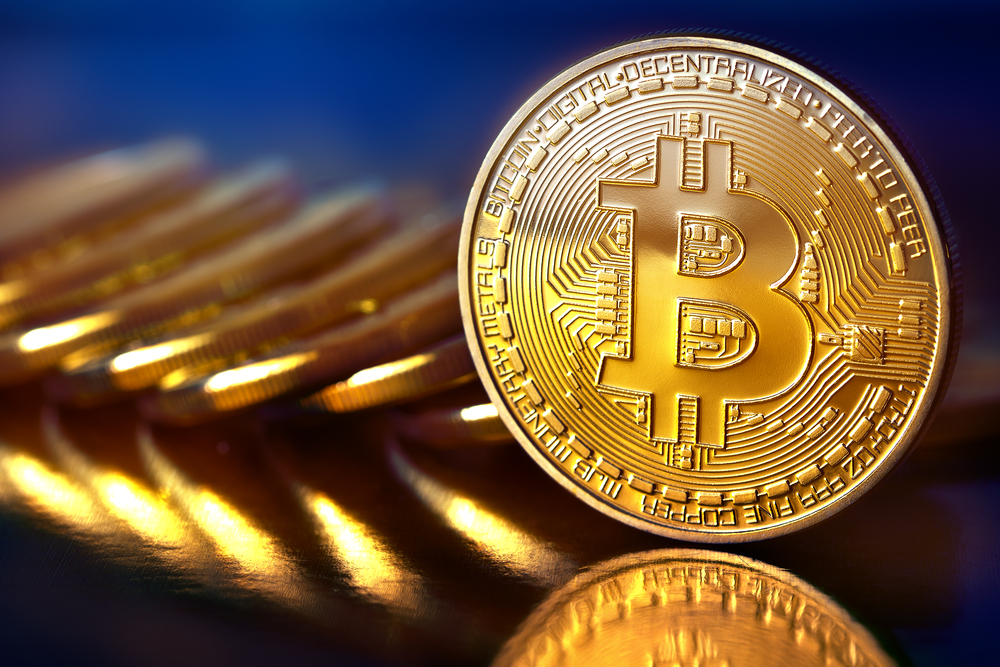
As volatile as the stock market has been for the last couple of months now, the cryptocurrency market has been that volatile for years now. Bitcoin, pretty much the gold standard in cryptocurrency, has seen wild changes in valuation just in the last year. The price over the last year retested the 52-week low and beyond—it actually went under $4,000 back in March—but now, the price is approaching the $10,000 mark for the first time since last February. With a major upcoming event happening in the cryptocurrency market, however, valuations are up in a big way as a halo effect seems to stretch out over the whole field.
A Halo You Can See for Miles
The event causing the theoretical halo effect is the upcoming halving of Bitcoin, where everybody who is actively mining Bitcoin discovers that they're working twice as hard to produce the same amount of Bitcoin. Put another way, the reward for completing the equations that produce Bitcoin is cut in half. This effectively works to make new Bitcoin tougher to find, and thus, anybody who wants Bitcoin either has to buy it on the open market—thus making it more expensive—or has to run their computers twice as hard to produce new Bitcoin.
It works as a kind of artificial scarcity effect, and that in turn drives the price up. And boy, did it ever. Bitcoin briefly crossed the $10,000 per coin mark, and though it's shed a little of those gains, it's currently trading at $9,902.01 as of this writing. In fact, thanks to Bitcoin's recent gains, the entire cryptocurrency market made gains, adding around $13 billion in value to the cryptocurrency market as a whole as customers looked for lower-priced alternatives to get in on the market. Recent reports suggest the entire market is currently worth around $268 billion, so the roughly five percent gained is a major stroke.
It's Not Just a Computer Thing, Though
As easy as it would be to chalk up the gains in cryptocurrency to a “computer thing,” a purely technical issue, there are some geopolitical and economic issues driving the gains in cryptocurrency as well. Those involved in the cryptocurrency market also point to the growing interest from institutional investors, as well as central bank monetary policies that support the growth of things like Bitcoin.
The institutional side of things is getting pretty impressive in its own right; one of the funds connected to hedge fund manager Paul Tudor Jones has a stake in Bitcoin. It's not a huge stake, exactly—it's described as “low single digits”—but for a major Wall Street fund to have any kind of hand in Bitcoin represents a major step forward.
Meanwhile, with central banks clearly prepared to do just about anything in their power to keep the economy up and running, that's allowing for diversification into things like Bitcoin.
A Double-Edged Sword
It would be easy to look at the overall market and see some positives in the cryptocurrency market. One, the crypto market, in general, is heavily diversified. If Bitcoin is too pricey, there are alternatives available, and in a pretty broad spectrum. Litecoin, for example, is often described as the silver to Bitcoin's gold. Ethereum also frequently comes up in the discussion, and there are a host of other options from Travelcoin to Dogecoin and beyond.
There's no shortage of options, and some even suggest that the conditions we're seeing in the regular market are also making cryptocurrency attractive. Cryptocurrency is often a kind of centrally-managed currency analogue, with its own built-in scarcity. It often can't be subject to inflation the way the currencies of nations can, which provides its own kind of built-in floor. The Federal Reserve was briefly seen looking into its own cryptocurrency issue not so long ago, and it's far from alone.
For some, cryptocurrencies act effectively like a digital commodity, almost like actual gold or silver. Plus, since a cryptocurrency's value is universal across nations, it makes an excellent facilitator for cross-border commerce; if someone in Zaire is selling widgets for one Bitcoin each, it's one Bitcoin whether you're in Michigan, Madagascar or Mongolia. The local currency conversion comes in when you buy the Bitcoin, not the widget.
So now, we see why Bitcoin—and other cryptocurrencies—are enjoying a little upward pressure. The volatility of the market pretty much ensures that this won't last long, but for those willing to HODL—a popular crypto trader acronym for “Hang On for Dear Life”—it likely won't be long until another upward push comes around and takes prices up with it.
Before you make your next trade, you'll want to hear this.
MarketBeat keeps track of Wall Street's top-rated and best performing research analysts and the stocks they recommend to their clients on a daily basis.
Our team has identified the five stocks that top analysts are quietly whispering to their clients to buy now before the broader market catches on... and none of the big name stocks were on the list.
They believe these five stocks are the five best companies for investors to buy now...
See The Five Stocks Here
Wondering where to start (or end) with AI stocks? These 10 simple stocks can help investors build long-term wealth as artificial intelligence continues to grow into the future.
Get This Free Report
Like this article? Share it with a colleague.
Link copied to clipboard.